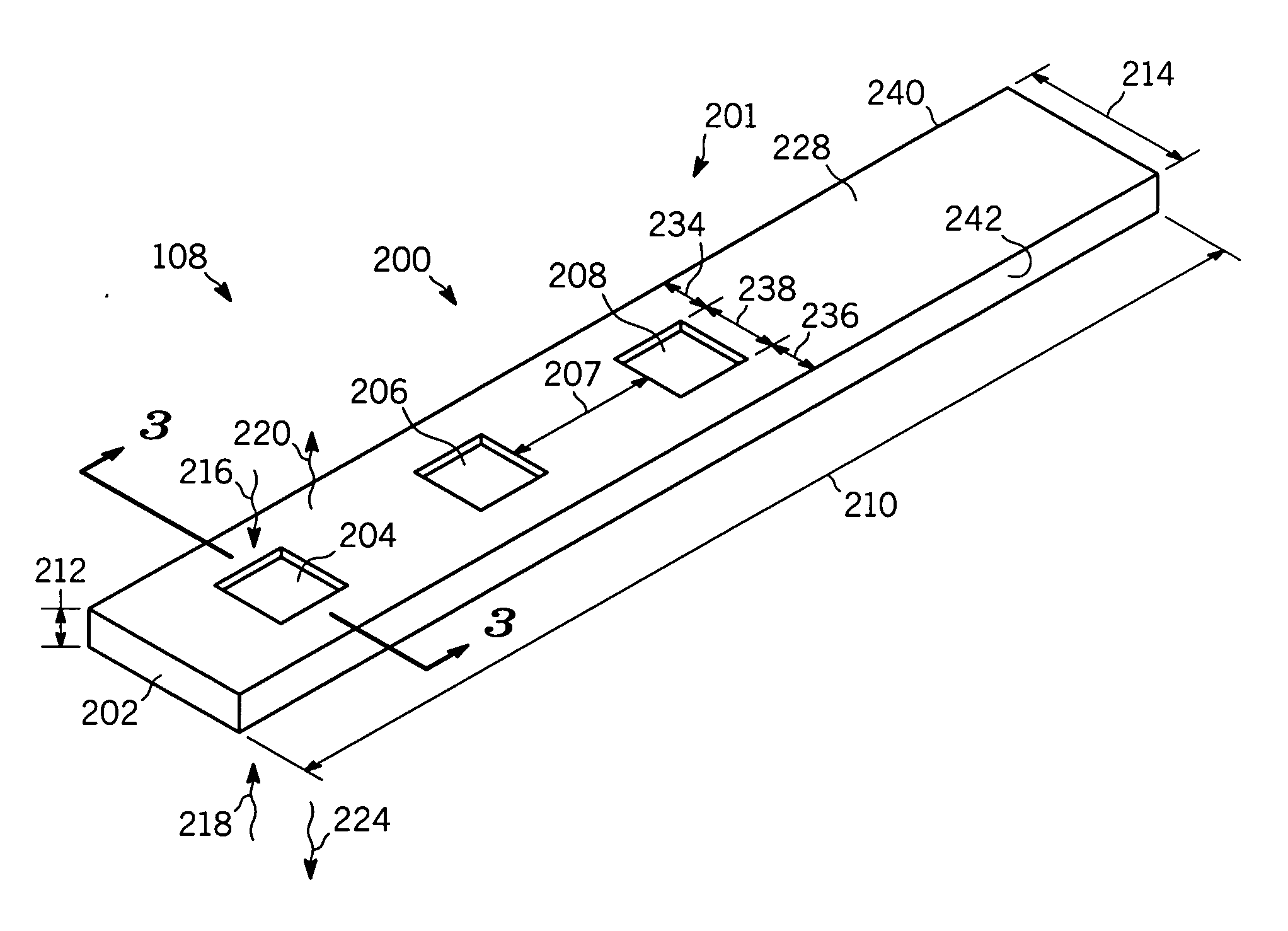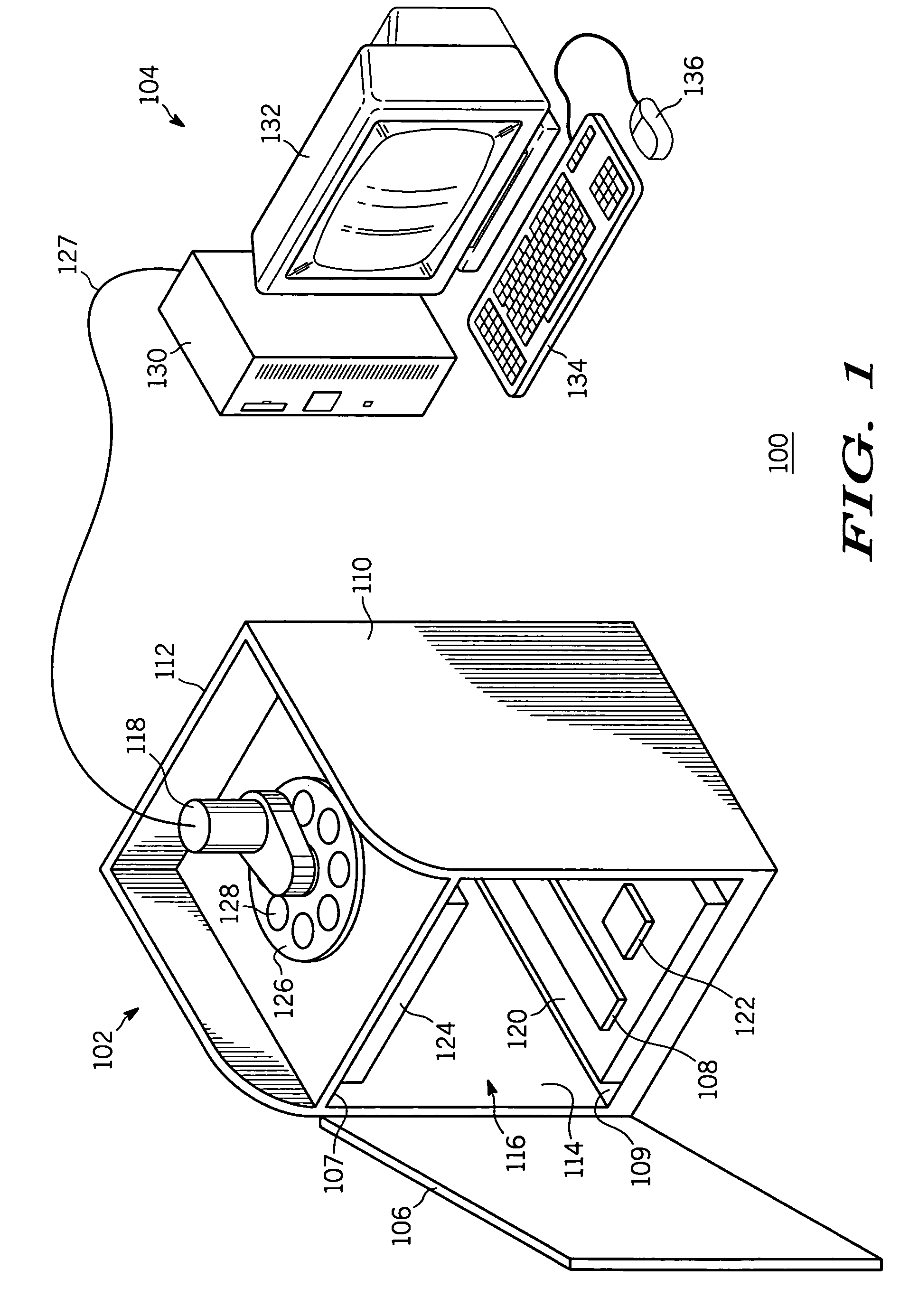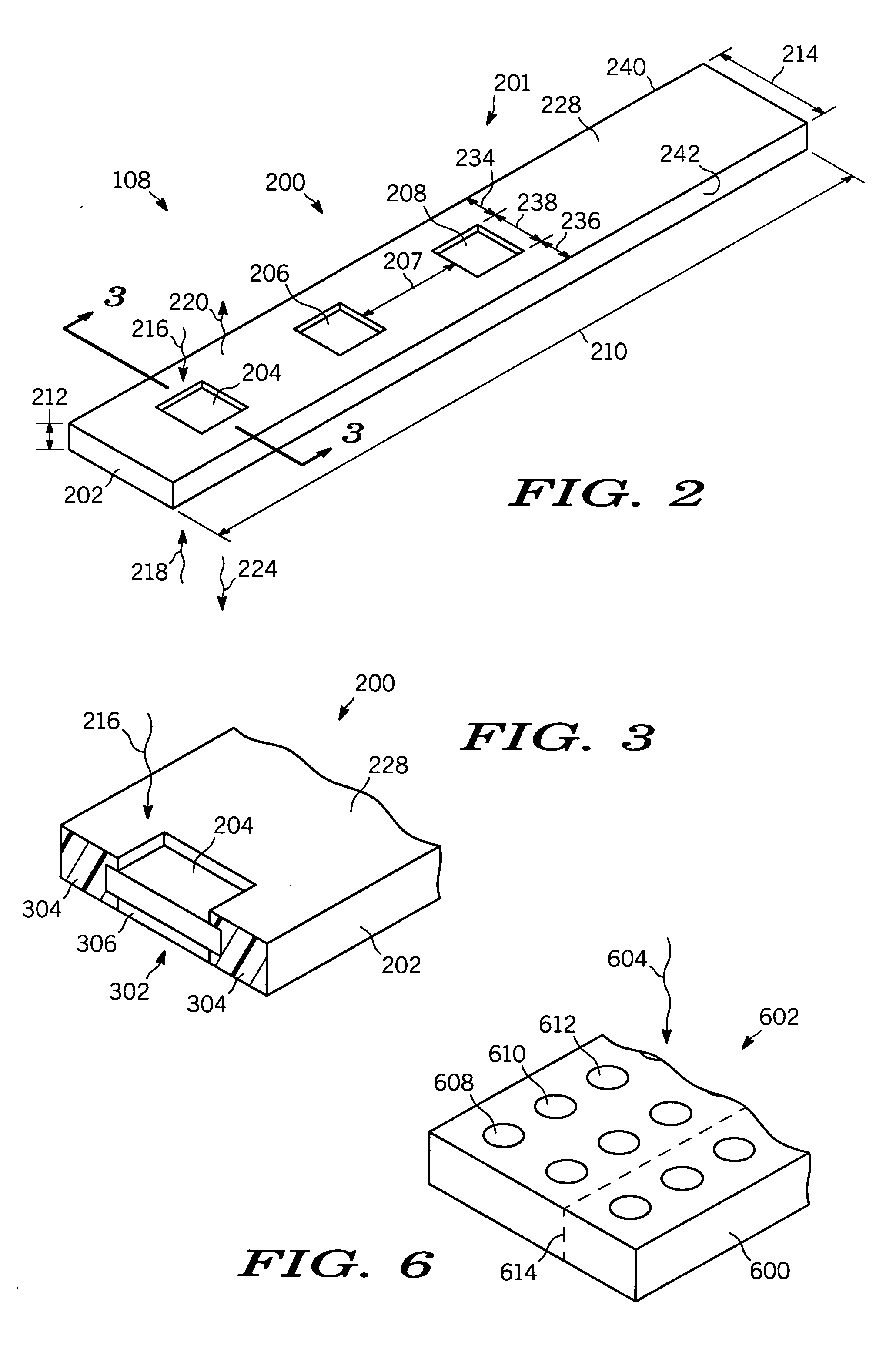Luminescent calibration
a luminescent calibration and calibration method technology, applied in the field of calibration techniques, can solve the problems of changing the performance of biological samples, conventional calibration does not address the problems of day-to-day variation of optical systems or biologic samples, and cannot be done with sufficient accuracy. to achieve the effect of removing day-to-day variability
- Summary
- Abstract
- Description
- Claims
- Application Information
AI Technical Summary
Benefits of technology
Problems solved by technology
Method used
Image
Examples
example 1
[0079] Example 1 demonstrates that there is system variation over time. In this experiment, luminescent standard 204 and electrophoreses gel 402 are placed into darkroom enclosure 102 and processed as described in FIG. 4 to generate an image and MGL values. (The figure also shows a separate electrophoresis gel 404. The use of this gel is made in next example #2.) After a period of time, electrophoresis gel 402 and luminescent standard 204 are reprocessed as previously described in FIG. 4 and is now shown in FIG. 5 as electrophoresis gel 502.
[0080] For the sake of clarity and simplicity, data from luminescent standard 204 and bands 446 and 526 will be used. The luminescent standard 204 and electrophoresis gel was removed for an X amount of time. The same luminescent standard 204 and same electrophoresis gel (shown as electrophoresis gel 502 on FIG. 5) was put back in the darkroom enclosure 102 and processed a second time.
[0081] The MGL values of luminescent standard 204 and corresp...
example 2
[0084] Example 2 demonstrates the normalization of two different electrophoresis gels 502 and 404. In this example, electrophoresis gel 404 has been processed in the same manner as electrophoresis gel 402 in FIG. 4. MGL values for luminescent standard 204 and bands 446 and 448 have been taken and stored in the memory of computer 130. The data from the luminescent standard 204 in FIG. 4 is identified as (FRS#1). In another experiment accomplished at a later time, electrophoresis gel 502 is generated. Electrophoresis gel 502 and luminescent standard 204 are placed into darkroom enclosure 102 imaged and processed so as to generate data.
[0085] For the sake of simplicity and clarity, the data from luminescent standard 204 taken with electrophoresis gel 502 in FIG. 5 will be identified as (FRS#2) and data from bands 526 and 528 will be used.
[0086] The MGL values recorded as described above are compared as shown in Table 2.
TABLE 2FRSBandBandFRSBandBand(204)(446)(448)(204)(526)(528)MGL2...
PUM
 Login to View More
Login to View More Abstract
Description
Claims
Application Information
 Login to View More
Login to View More - R&D
- Intellectual Property
- Life Sciences
- Materials
- Tech Scout
- Unparalleled Data Quality
- Higher Quality Content
- 60% Fewer Hallucinations
Browse by: Latest US Patents, China's latest patents, Technical Efficacy Thesaurus, Application Domain, Technology Topic, Popular Technical Reports.
© 2025 PatSnap. All rights reserved.Legal|Privacy policy|Modern Slavery Act Transparency Statement|Sitemap|About US| Contact US: help@patsnap.com



